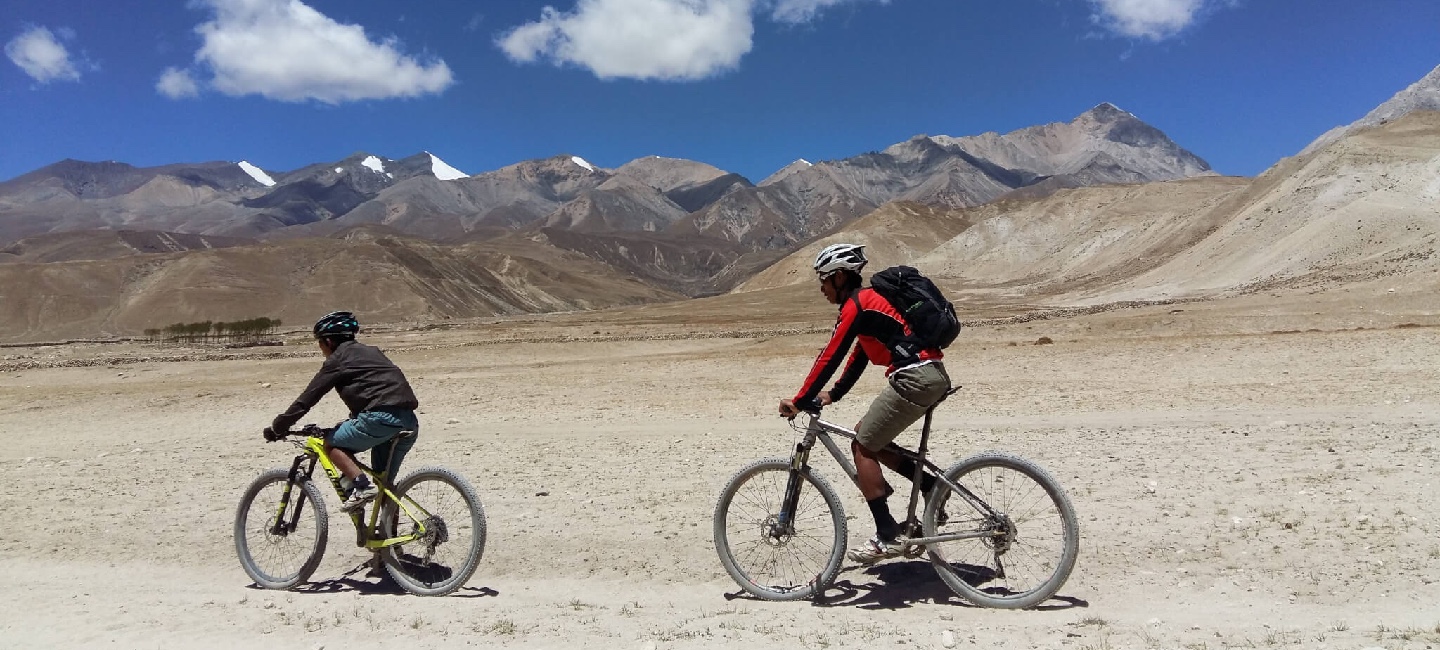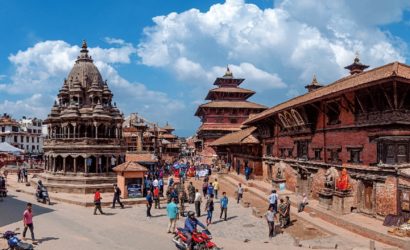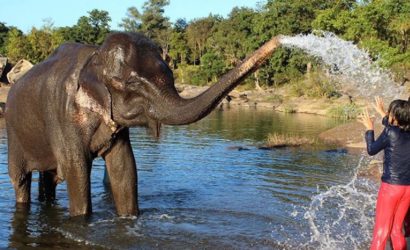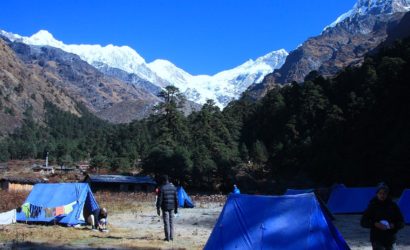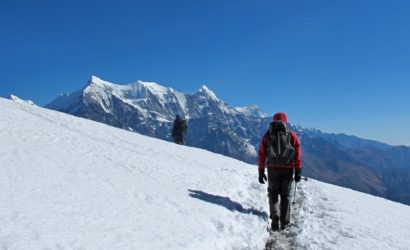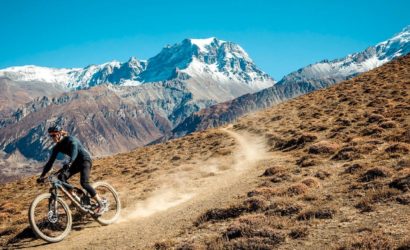Upper Mustang Biking Tour is rapidly becoming one of Nepal’s most popular cycling destinations. It’s not just about the challenging ascents and endless single-track descents, it’s about the journey of discovery of nomadic horse culture, amazing scenery and warm-heart people who living in the region.
Upper Mustang is located north of Annapurna which is geologically and culturally part of the Tibetan plateau. The valleys are arid and dry with colorful rock formations containing many cave dwellings high up in the cliffs.
The first trekking parties were allowed into Upper Mustang in 1992 and there are still very few people (about 700 travellers each year) visiting Upper Mustang as a result it is one of the few places left where one can see undisturbed Tibetan culture you can experience the true life of the real mountain people in Nepal.
In many ways, Upper Mustang Biking Tour is similar to trip in to Tibet, which geographically it is a part of. You will push yourself and your bike to the limits on the rugged trails on route to Lo-manthang.
Mustang, a land where the soul of man is still considered to be as real as the feet he walks on, while the land itself is almost treeless, barren landscape with a countryside but where beauty and happiness flourishes, in spite of hardship.
This was part of Gungthang’s Tibetan Kingdom until the 1830s. Lo Monthang’s fabulous medieval wall city, Mustang’s unofficial capital, remains a kingdom in a kingdom full of culture and religious heritage. Lo-Monthang’s early history is embellished with myth and legend instead of the recorded fact.
This is sure to be a mountain biker’s unforgettable trip. Participants are expected to agree to follow certain guidelines to ensure that the land’s unique sights, culture and beauty are preserved and respected.
Also it requires a special permit from the government of Nepal (which we will arrange for you) to visit this special preserved land. The permit fee is USD 500 per person for 10 days. Counting starts from Kagbeni once you enter restricted Area. For any extra days in restricted area you are subjected to extra charge for extra days (USD 50 per day).
Upon your arrival in the Kathmandu airport after completing your custom formalities Visa, etc. pick up your luggage and look for our airport representative from Himalaya Discovery Adventures, who will display your name on the board at the arrival gate. You will be greeted by our representative and transferred to your hotel by private tourist vehicle. Overnight in Kathmandu.
Today is free for sightseeing in Kathmandu. You may wish to visit Durbar Square in the heart of the old city where the old Royal Palace, with its intricate woodcarving is located. The whole area is a maze of temples and images. Leading away from the square in all directions are narrow alleys, full of the most amazing variety of shops and stalls.
Some of these landmarks are considered World Heritage Sites including the historic Bhaktapur Durbar Square, the famous ‘Monkey Temple’ Swayambhunath and Buddhists shrine Buddhanath which is one of the largest Stupas in the world.
There will also be a full trip briefing today with gear check. In case you need to hire or buy equipment locally there will be time to do this today. Overnight in Kathmandu.
Pokhara is a beautiful valley town, with panoramic views of Annurpurna, Machapuchare, and Dhaulagiri in the west, Lamjung Himal and Manaslu in the east. The town of Pokhara is considerably less hectic than Kathmandu and is the starting point of your trip.
Discover beautiful Phewa Lake, known for its tranquility and picture perfect postcards; or visit Devi Falls, a minor waterfall named after a tourist that fell inside. Overnight at a hotel in Pokhara.
There are numerous flights that service the Jomsom airstrip early each day before the Kali Gandaki wind picks up by mid-morning. To get used with the altitude and the weather condition, we assemble the bikes as soon as we land in Jomsom and ride the relatively flat river trail to Kagbeni, the border-town of the recently forbidden Mustang Kingdom. Overnight at guesthouse.
Rideable: 100%
After breakfast early in the morning, we ride up hill, gaining almost 1000m in elevation, as we head towards Muktinath. This is the highest point of this trip. The landscape is extremely dry and desert-like.
You may come across a handful of trekkers and pilgrims, mainly from India, on their way to the holy temple with the eternal flame in Muktinath that burns from a natural gas source. Reaching the culturally and religiously site with stunning mountain views is quite an achievement. Overnight at guesthouse.
Rideable: 100%
Today we enter the restricted region of Upper Mustang. It’s an uphill stretch from Muktinath through Chhyonggur and up to the Gyu La Pass at 4077 meters to the pass is 90% rideable and single track. Here there are 180 degree panoramic views of the snow capped mountains.
A short section of steep downhill and we follow an undulating ridge trail down to Tetang at 3040 meters, more than a 1000 meter descent on suburb single track. Pass an ancient Mani Wall and cycle on down to Chhusang.
From here there is a slight climb and river crossing to reach Chele on the opposite river bank where the river passes through a rock tunnel. Overnight at guesthouse.
Rideable: 90 %
A short but hard day of riding, leaving behind the river bed we climb in to the hills. Four passes lay between us and Syanboche, so yeah there will be a few ups and downs today as we cross Taklam La 3624 meters, Dajori La 3735 meters, Bhena La 3860 meters and finally Yamda La at 3860 meters.
Halt below Syangboche La on the Syangboche River. This days riding consists of mixed jeep track, single track and steep downhill with some sections of carrying and pushing. Overnight at guesthouse.
Rideable: 95%
On Leaving Syangboche, there is a short climb to Syangboche La before undulating jeep track makes for an easy ride through the open valley scenery and Barley fields to Ghiling.
From here we climb up to Nyi La at 4010 meters this climb is rideable jeep track. From this pass there are inspiring views of Mustang, Annapurna and Nilgiri.
The ride is a welcome change from the days of climbing and crossing passes. The scenery opens up and there are fields of mustard and barley in the right season which makes for lush pockets of greenery.
It is also one of the most scenic days with the ever changing colours of the landscape form yellow and browns to reds, greys and blues as the sun moves across the Himalayan sky.
From the pass til Gami is nice single track downhill and then back on to jeep track. This is a beautiful section of the ride and defiantly a day to get your camera out!
In the village you can visit the friendly monks in the ghompa and explore the beautiful village. In Charang, you can find the greatest library in Lo and the 400 year old Gulpa Sect Monastery. Overnight at guesthouse.
Rideable: 100%
From Charang, we have to cross Lo La Pass at 3810 meters, just before Lo- Mantang. This pass is also known as “Windy Pass” and from here you can view the walled city of Lo-Manthang, your first tantalizing view of this kingdom lost in time and your penultimate destination.
In June and July, the time when the crops are almost ready to harvest makes for the most dramatic scenery. The barren brown landscape is scattered with fields of vibrant green and gold rolling with the wind under the vivid blue sky of the Himalaya, a truly memorable scene.
The ride is easy if a bit of a long climb, about 25 km total riding distance. You will enjoy the open jeep track trail and should arrive in Lo-Manthang by lunch time, which gives us the afternoon to rest and soak up the atmosphere of this surreal place. Overnight at guesthouse.
Rideable: 100%
Lo-Manthang is perhaps one of the most interesting places in the Himalaya and a couple of days spent here sightseeing is well worth it. Visit the Royal Palace where you have the privilege of having tea or perhaps dinner with the King of Lo himself, what an experience!
In the afternoon there are three interesting Monasteries to visit, one of them is over 900 years old and displays some of the most beautiful Thangka paintings found in Nepal the intricate details and vivid colours of these paintings is a stark contrast to the wide open spaces of the region.
One day there is also the option to ride up to Garphu. Follow the upper reaches Kali Gandaki River, crossing over several of its tributaries.
Here you will find Ghom a cave tunnelling into the mountainside which is the historical site of a Monastery and the cave of one thousand windows.
The beautiful scenery and isolated Tibetan culture make this day trip a worthy experience. The way back from Ghom is beautiful single track through traditional villages. Overnight at guesthouse.
This truly is a place to lose yourself in the history, rustic architecture and mind blowing landscapes, one could easily roll back in time 100 years or more here.
Rideable: 100%
Leaving behind Lo-Manthang, cycle over the 4090 meter Pangga Pass, it’s a challenging climb about 80% rideable on single track, but you get great views from the top. From the pass the road leads steadily down to Dhakma. The downhill is amazing.
Around Dhakma you can see some of the most dramatic scenery on offer, where the landscape changes from red to blue and is especially breathtaking around sunset and sunrise. Ride from Dhakmar and onto Gami for the overnight stop.
Around Gami there are some interesting village ruins to explore as well as the longest Mani Wall in Mustang which is found near the Japanese Hospital. Following the river to Ghar Ghumpa at 3950 meters.
From the Ghumpa, climb to Mui La (Pass) at 4170 meters, you have to carry for some distance and then it’s a great rideable downhill to Dhakmar before riding on to Gami, Overnight at guesthouse.
Rideable: 100%
This route retraces the same trail as we passed on the way up. There is quite a bit of climbing involved today. We ride lots of single track sections climbing until 3800 meters and again downhill to Syangboche, Overnight at guesthouse.
Rideable: 100%
Leaving Samar, we have two small passes, Dajori La (3735M) and Taklam La (3624M). Along the way the route passes the sacred place where the ancient art of Sky Burial is carried out.
Here you may see the rare Himalayan Vultures soaring in the sky. Cycle on downhill to Chhusang, Overnight at guesthouse.
Rideable: 100%
From Chhusang it’s a steady ride along the river back to Jomsom via Kagbeni. Today you leave the kingdom of Upper Mustang and head back into the Annapurna Region. Overnight at hotel
Rideable: 100%
Note: From Jomsom Optional direct flight to Pokhara or biking all the way down to Pokhara depends on your Interests.
Rideable: 100%
The ride starts off flat along the river then undulates to Marpha the best place in the Himalaya to get fresh apples and renowned locally produced Apple Brandy.
Here the trail drops down along the roaring river all the way to Tatopani. We pass the Impressive Rupse Chhara on the way (waterfall), a nice place to stop for lunch.
Tatopani is our resting place for the night, enjoy the therapeutic hot springs and a very cold beer, you deserve it! Overnight at guesthouse.
Rideable: 100%
An easy days ride, 18 km of mostly downhill jeep trail takes us to the main road and a town called Beni, here we will transfer for the three hour drive back to Pokhara by Jeep.
There is the option to ride the last section downhill to Lake side from near the hill station of Sarangkot. A fitting end to a brilliant ride!
Rideable: 100%
Today is rest and relax throughout the day. Overnight at hotel in Pokhara.
We depart at approximately 7.30 am for Kathmandu by tourist bus. We arrive back in Kathmandu at around 2-3.00 pm. Overnight at a hotel in Kathmandu.
Today is rest and relax throughout the day. If you get interested to take some gifts from Nepal for friends and relatives, visit to some nearby shops or go out in Thamel for typical Nepalese goods which can be assisted by our guide or you can do it yourself too.
In the evening we will have a farewell dinner in a traditional Nepalese restaurant with cultural performances. Overnight at hotel in Kathmandu.
The trip concludes, our airport representative will drop you to the airport for your flight departure from Nepal.

